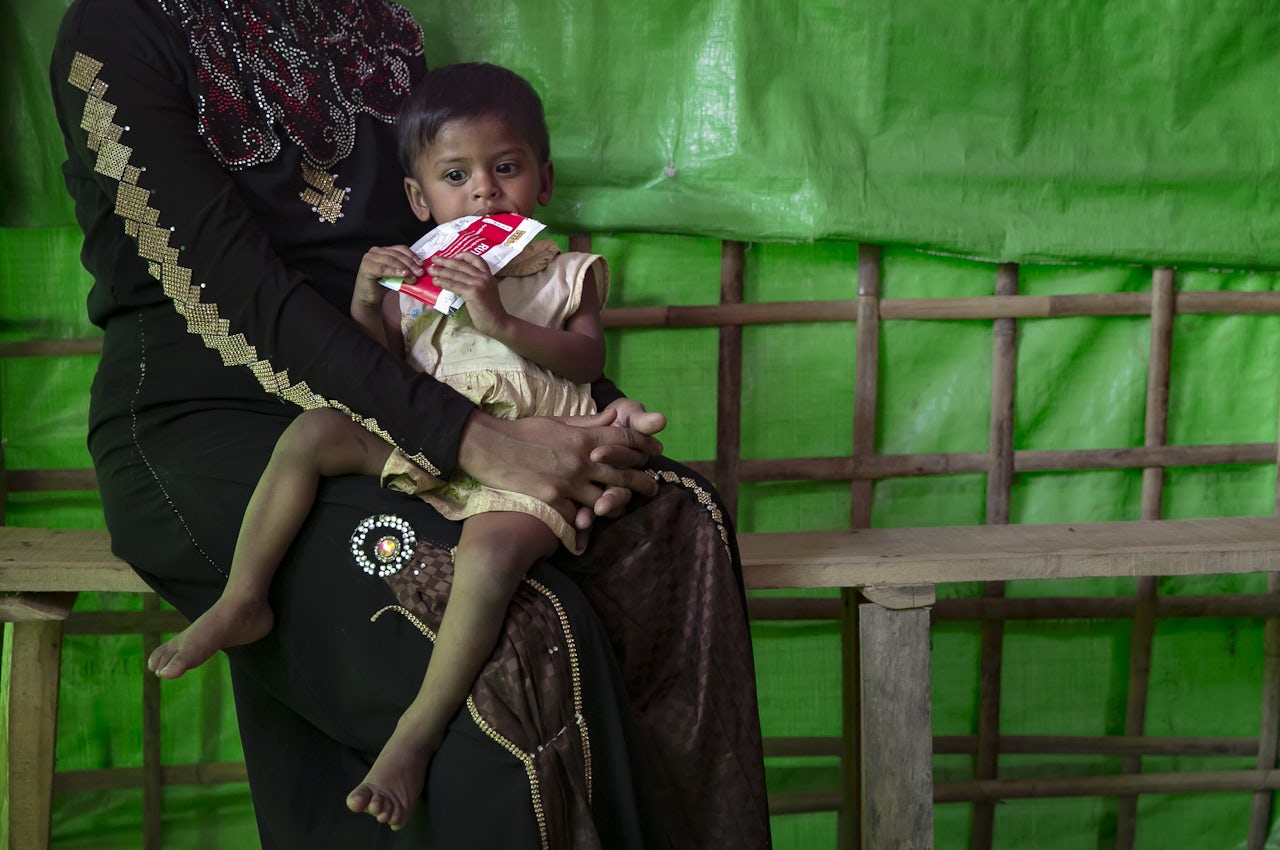Nearly 700,000 Rohingya people, a minority Muslim group from Myanmar, have arrived in Bangladesh since August 2017, fleeing violence and persecution. The overwhelming majority continue to live in crowded refugee camps, where they join hundreds of thousands of other Rohingya refugees that arrived in years prior. More than half of the recent arrivals are children — and they’re severely malnourished, according to a new study released today by the U.S. Centers for Disease Control and Prevention.
The study focused on 268 children living at the Kutupalong refugee camp, a government-run settlement in Cox’s Bazar in southeast Bangladesh that is the world’s largest refugee camp, and found that 43.4 percent are experiencing chronic malnutrition, while 47.9 percent are suffering from anemia.
Globally, malnutrition is the largest contributor to disease, particularly among children, according to the World Food Program. Eva Leidman, MSPH, an epidemiologist with the CDC’s Emergency Response and Recovery Branch and the lead researcher behind the study, told The Outline that child malnutrition can lead to severe health complications and death.
“Malnutrition is known to increase the severity and duration of many infectious diseases, including, for example, measles — a particular concern given ongoing circulation of measles in the camps,” Leidman said.
The new arrivals in Bangladesh joined an estimated 200,000 Rohingya refugees who had previously fled Myanmar, where members of the Muslim ethnic group are considered illegal immigrants from Bangladesh, denied citizenship, and regularly subject to discrimination. The August 2017 exodus began after a small group of Rohingya militants attacked police posts in the Rakhine province, according to the Myanmar government. Following the attacks, Myanmar’s, backed by local mobs, burned Rohingya villages and killed civilians. The recent wave of refugees caused the population of the camps to more than double, according to the CDC study.
The problem in the Rohingya refugee camps isn’t a lack of food — it’s the kind of food that was being distributed, Leidman found. “The Rohingya are primarily dependent on food by the humanitarian community. These distributions early on contained limited micronutrients,” Leidman said, adding that humanitarian groups have since altered the kinds of foods they distribute.
Malnutrition and disease are just two problems Rohingya refugees are facing in Bangladesh. As monsoon season approaches, the refugee camps — crowded tent cities — are at risk of being destroyed by floods and landslides. The Guardian reported in January that an estimated 100,000 people will have to relocate from the Kutupalong camp, the focus of the CDC’s study.
But the Rohingya can’t return to Myanmar yet, even though the country’s government has verified a few hundred Rohingya for possible repatriation, Reuters reports. Ursula Mueller, the United Nations Assistant Secretary-General for Humanitarian Affairs, told Reuters that Myanmar’s government remains hostile to the Muslim minority group.
“I witnessed areas where villages were burned down and bulldozed,” Mueller said. “From what I’ve seen and heard from people — no access to health services, concerns about protection, continued displacements — conditions are not conducive to return.”
